From the shelves bursting with books to the brightly colored decorations adorning every wall, the kindergarten classrooms at Fruit Valley Community Learning Center and Prune Hill Elementary School are temples of early learning.
At each school, teachers coach smiling students through colors, words, letters, numbers and shapes, setting the foundation for later learning these students will need to succeed in adulthood.
A visitor to these two schools in Vancouver Public Schools and the Camas School District would be hard-pressed to detect differences between the young learners. But data collected early in the school year shows these students began their school careers at opposite ends of a kindergarten readiness spectrum. Whether students come into school ready to learn, even from kindergarten, can mean the difference between a student who graduates from high school and one who faces significant barriers throughout their education and other areas of their lives.
Fruit Valley and Prune Hill elementary schools are respectively the county’s lowest- and highest-ranked schools by Washington Kindergarten Inventory of Developing Skills standards. The WaKIDS program measures whether children enter school with the foundational skills needed to succeed in class.
Districts have been rolling out the state program, which also emphasizes support for families and improved collaboration between elementary schools and preschools, since the 2010-2011 school year with the launch of full-day kindergarten. This year marked the first time all of Clark County’s school districts are participating in WaKIDS.
Enlarge

Amanda Cowan/The Columbian
Students deemed school-ready meet six developmental or academic criteria. Teachers are tasked with marking whether their students meet certain benchmarks in literacy, language and math, as well as cognitive ability, social and emotional readiness, and physical traits. Students who fail to meet all six are not considered kindergarten ready, regardless of how many of the other traits they might meet.
“We know with young children their development doesn’t happen in silos,” said Jackie Brock, school readiness manager at Educational Service District 112. “To get a true picture of how children are growing and developing, it’s more important to look more broadly.”
“We know with young children their development doesn’t happen in silos.” Jackie Brock, school readiness manager at Educational Service District 112
According to data provided by the state’s Office of Superintendent of Public Instruction, Clark County trends behind the state average of students meeting all six criteria, with 43 percent of children ready for kindergarten compared with 47 percent statewide. Those rates are lower for at-risk populations, like some students of color, children from low-income families and children in special education programs.
Experts and educators say those discrepancies for at-risk populations are often the result of systemic community issues like poverty, increasing rent and lack of access to high-quality, affordable preschool.
“Poverty really affects families in a lot of different ways, and the consequences are often pretty traumatic,” said Jess Robertson, director of children’s programs at nonprofit agency Innovative Services Northwest, which provides preschool for low-income families. “The biggest challenge we face is the side effects of that.”
What is kindergarten readiness?
Children are considered kindergarten ready if they meet all six Washington Kindergarten Inventory of Developing Skills standards. Experts warn there’s nuance in the data — a student may meet five of the six state standards, but will be lumped into the same category as a child meeting only one, though the first child is significantly better prepared to learn. The six readiness standards are:
Social-emotional
The child can manage their feelings, develop positive relationships with peers and collaborate with groups of students. They listen to their teacher, and can follow rules and meet expectations.
Physical
The child can run, jump and is able to traverse obstacles. They’re able to balance on one foot, or cross a balance beam. They show fine-motor skills, like holding scissors or pencils correctly.
Language
The child pronounces unusual words to ask what they mean. They can engage in complex or lengthy conversations. They understand and follow directions.
Cognitive
The child can pay attention to tasks and projects over extended periods of time. They can pursue a goal until it’s reached, like building a sand castle. They can recognize symbols, like tally marks for counting.
Literacy
The child understands rhymes. They’re able to identify upper- and lowercase letters. They’re able to either fully or partially write their own name.
Mathematics
The child can verbally count up to 20. They’re able to count to solve simple math problems. They know basic two- and three-dimensional shapes.
Critical years
In February, dozens of early learning advocates, educators and public officials gathered at the Vancouver Community Library for the unveiling of the State of Our Children and Families report.
The research, conducted by Vancouver nonprofit Support for Early Learning and Families with support from dozens of other organizations, offers a stark picture of where local children stand on school readiness. It also offers context on the challenges families face, providing details in Clark County and surrounding areas about the number of young children in single-parent homes (30 percent), living in poverty (15 percent) and families with children younger than 18 who are homeless (308).
SELF Executive Director Debbie Ham said when she shared the data at a recent event, the audience gasped at how few Clark County children are ready for kindergarten.
“I think people aren’t aware,” Ham said. “The data is new. It’s bringing to light something that’s been in development for a number of years, and now we have information statewide. We haven’t had the ability to tell the full story.”
But the report also points to the importance of kindergarten readiness, calling for broad community action to support the region’s youngest learners. Children who start school behind their peers, according to the report, can remain at a disadvantage throughout their schooling if educators and family support counselors do not intervene.
“School districts will tell you it is extremely difficult to help these children ‘catch up’ and many never make it,” the report said. “Research shows that children that are not ‘caught up’ by third grade most likely will never catch up.”
In turn, according to the report, children who are not reading at grade level by the end of third grade are four times less likely to graduate from high school on time. If they’re from low-income families, those children are six times less likely to graduate on time.
Brock described those years leading up to third grade as the time children are “learning to learn.”
“Once children transition out of that period of early childhood, if they’re still in the ‘learning to learn’ stage of development, then it’s much more difficult for them to master some of the more complex material they’ll be exposed to in education,” she said.
Enlarge

Amanda Cowan/The Columbian
Education advocates often cite the work of Nobel Laureate economist James Heckman, whose work on early childhood education indicates that for every dollar invested in early learning, there is a 13 percent return on investment. Heckman’s research found that early educational opportunities make children less likely to be involved in the criminal justice system and more likely to graduate from high school and find family-wage jobs.
Despite Heckman’s work and other research showing similar outcomes, Jodi Wall, ESD 112’s executive director of early care and education, said it can be hard to convince people of the importance of investing in early childhood education.
“What we’re saying is you can pay now or pay later,” she said. “If we could invest in these early years, then you’re not going to need to invest later, but you’re going to have to wait.”
ESD 112 Superintendent Tim Merlino echoed the economic importance of investing in early education.
“It’s about saving money from a kid falling so far behind,” Merlino said. “Who knows what happens? You end up in jail or you end up in trouble.”
He pointed to Seattle, where city voters in 2011 supported a $232 million Families and Education Levy. Of that, $61 million is dedicated to early learning, including the creation of a universal preschool program.
“We don’t really have the same political will to put forward a levy,” Merlino said. “It’s costly.”
But, he added, “early childhood is everyone’s priority.”
“I don’t think people know this option is available to them.”
Building in Fruit Valley
At Fruit Valley Community Learning Center on a recent Friday, a classroom of 38 kindergarten students sat quietly as they practiced reading. Some flipped through brightly colored picture books, while a larger group sounded out the words “pup,” “pig,” and “rub.”
At the beginning of the school year, only 7.1 percent of these students met all six criteria for school readiness, according to OSPI. Those numbers were similarly low or lower for low-income students and Hispanic students, groups who tend to be more at risk of not being school ready. About 7.7 percent of the school’s kindergartners from low-income families did not meet all the domains. None of the Latino and Hispanic students met all six standards.
Enlarge

Amanda Cowan/The Columbian
Fruit Valley Principal Matt Fechter said the school’s biggest barrier is the “chronic poverty” of the neighborhood. At Fruit Valley, 84.9 percent of the school’s students qualify for free or reduced-price meals, one of the highest rates in Clark County.
That poverty in turn limits families’ accessibility to high-quality preschool and child care programs. Kindergarten teachers Sherra Fink and Nikki Halstead estimate only 40 percent of their students attended preschool. In Clark County, the median cost for preschool was $780 a month in 2016, according to data from Child Care Aware of Washington, a nonprofit organization connecting families with early learning programs.
“When you can’t afford food, you can’t pay for preschool,” Fechter said.
While there are federally funded Head Start and state-funded Early Childhood Education and Assistance Program preschools available for free to low-income families, only 60 percent of families who are eligible for those programs can access them due to lack of enough spaces, Wall said.
“There’s not enough money to supply a universal slot allocation,” Wall said.
Halstead said WaKIDS data provides a snapshot of where students need extra help.
“When they come to us, there’s not so much early childhood intervention going on,” she said. “We need to start early and take off running.”
“We need to build that trust and relationship with students.” Nikki Halstead, kindergarten teacher at Fruit Valley Elementary
Knowing kids need extra support, Fink and Halstead have developed a kindergarten program that provides individual attention to students and support for their families. By co-teaching the students, Fink and Halstead trade one-on-one time working with students. Each work with small groups, and classroom assistants also spend time reading and working with students. The school also hosts a series of evening events for parents and their children in the summer, helping the kindergarten teachers build relationships with their families leading up to school.
“We need to build that trust and relationship with students,” Halstead said.
District data show those efforts are working at Fruit Valley Community Learning Center. Schools are only required to conduct the WaKIDS assessment at the beginning of the school year, though some perform it multiple times. Vancouver Public Schools tracked WaKIDS standards at its schools at the beginning and end of the 2015-2016 school year. They found that last year, while 24.49 percent of their students were meeting kindergarten readiness standards in October, that number increased to 95.92 by year’s end.
“You see them sprout emotionally, academically and physically,” Fechter said.
Prepared on Prune Hill
In Prune Hill Elementary School kindergarten teacher Katie Schram’s class, children played, read picture books or painted cherry blossoms while a photo of a pagoda was displayed on a large television screen and Zenlike music played softly in the background.
Camas’ children, as a whole, are far more prepared for kindergarten than other county students, and none more so than at Prune Hill. Here, 87.3 percent of students meet the readiness standards.
School officials give credit to high preschool rates and Camas’ economic prosperity for students’ early success.
Enlarge

Amanda Cowan/The Columbian
“We’ve watched this town change to high-tech industry,” Principal Julie Swan said, listing Sharp Microelectronics and Fisher Investments among the city’s high-paying employers.
“We have strong families that value education,” she added.
Of Schram’s 21 students, only one hasn’t been to preschool. Then there are the other engaging experiences that can have an impression on young children — visiting the Oregon Museum of Science and Industry, or going to the Portland Zoo, she said.
“They have lots of experiences,” she said. “Most of them are read to. They have lots of books.”
Despite those early advantages Camas families may have over those in Fruit Valley, Schram said her students still experience tremendous growth over the course of a year. After all, they’re still 5.
“They come in like night and day,” she said. “We spend a month talking about how you line up.”
This is the Camas School District’s first year conducting WaKIDS assessment, as it is the first year the district has accepted state funding for full-day kindergarten. Schram said the positive results were encouraging.
“In some ways, it confirmed the way we’re already going,” Schram said.
Teaching the whole child
Children in Clark County districts, and the state as a whole, tend to struggle with being socially and emotionally ready for school. Statewide, 70.2 percent of students are socially and emotionally ready for school, making it the second lowest performing domain only to math, where 66 percent of students are deemed ready. Clark County’s largest districts — Evergreen, Vancouver and Battle Ground — follow state trends.
Enlarge

Amanda Cowan/The Columbian
That category evaluates important foundational skills for students. Students who are socially and emotionally ready for school can keep their feelings in check, build friendships with other students and healthy relationships with adults, and take part in group activities.
“It’s everything from being able to follow directions, wait for a turn, advocate for what it is you need, be able to effectively resolve conflict,” said Brock with Educational Service District 112. “All those key skills that are really important in terms of the overall functioning of the classroom.”
Preschool providers for low-income families match parents with advocates who meet with families one-on-one, giving parents access to the types of wrap-around housing, job training, transportation or other support they may need.
“When we first meet with the families, developing that trust with them is a huge thing,” said Mel Partridge, a family advocate for Innovative Services NW’s ECEAP families. “We really make this time to visit them and get to know them as partners.”
Experts say children who aren’t ready for the emotional challenges of kindergarten often face deeper, more systemic problems at home. At Innovative Services NW, preschool teachers are working with students who may be victims of abuse or neglect, who are in the foster system and move from home to home, and even students suffering from post-traumatic stress disorder. Robertson said it’s impossible for students to learn if they’re focusing on fighting for survival.
“That affects everything that happens,” Robertson said. “Their first go-to in the lives that they have is they need to fight for what they need, whether that’s physically or with their voices.”
The state’s mission with WaKIDS is to eliminate the impact those family struggles have on young children. By 2020, the Washington Department of Early Learning’s goal is that 90 percent of 5-year-olds will be ready for kindergarten, with race, ethnicity and family income no longer affecting readiness.
SELF will soon kick off a series of events to push that mission forward locally. The release of the State of Our Children and Families report was the first step, Ham said.
“Our primary goal is to really have a broader community conversation,” Ham said. “Everybody can do something.”
Tips for kindergarten registration
It’s time to register your child for kindergarten. A child must be 5 years old as of midnight, Aug. 31 of the year of entry to attend kindergarten. Educational Service District 112 encourages parents to enroll their children at age 5 regardless of their children’s development.
“We don’t want parents to choose to keep their students back another year,” said Jackie Brock, school readiness manager for ESD 112. “If kids aren’t in school, those delays may get bigger. That gap may widen.”
The child’s birth certificate must be produced at time of enrollment. State law also requires proof of the student’s full immunization record, plans to complete vaccines or a certificate of exception. Families still working on compiling that material can pick up registration packets.
More information, including school boundary maps and information about kindergarten orientation, can be found on your district’s website.
Katie Gillespie: 360-735-4517; katie.gillespie@columbian.com; twitter.com/newsladykatie
Mom: Preschool program changed lives
Mother of three goes from client to advocate for EOCF
Vancouver mom Jess Weeks says enrolling her daughters in preschool programs changed their lives, as well as hers.
Weeks, a mother of girls ages 2, 4 and 6, has made the equivalent of a full-time job out of being a volunteer parent ambassador and chair of the policy council for Educational Opportunities for Children and Families. EOCF administers Early Childhood Education and Assistance Program and Head Start preschool classrooms, including many at elementary school campuses.
It was only a couple of years ago when Weeks and her husband were struggling. Weeks’ husband, now a truck driver, had just lost his job. They moved in with his parents in Vancouver. Weeks was pregnant with their third daughter, Isabelle. Her middle child, Adaline, struggled to communicate. Her oldest, Lellianna, had severe behavioral issues, lashing out physically when she got angry.
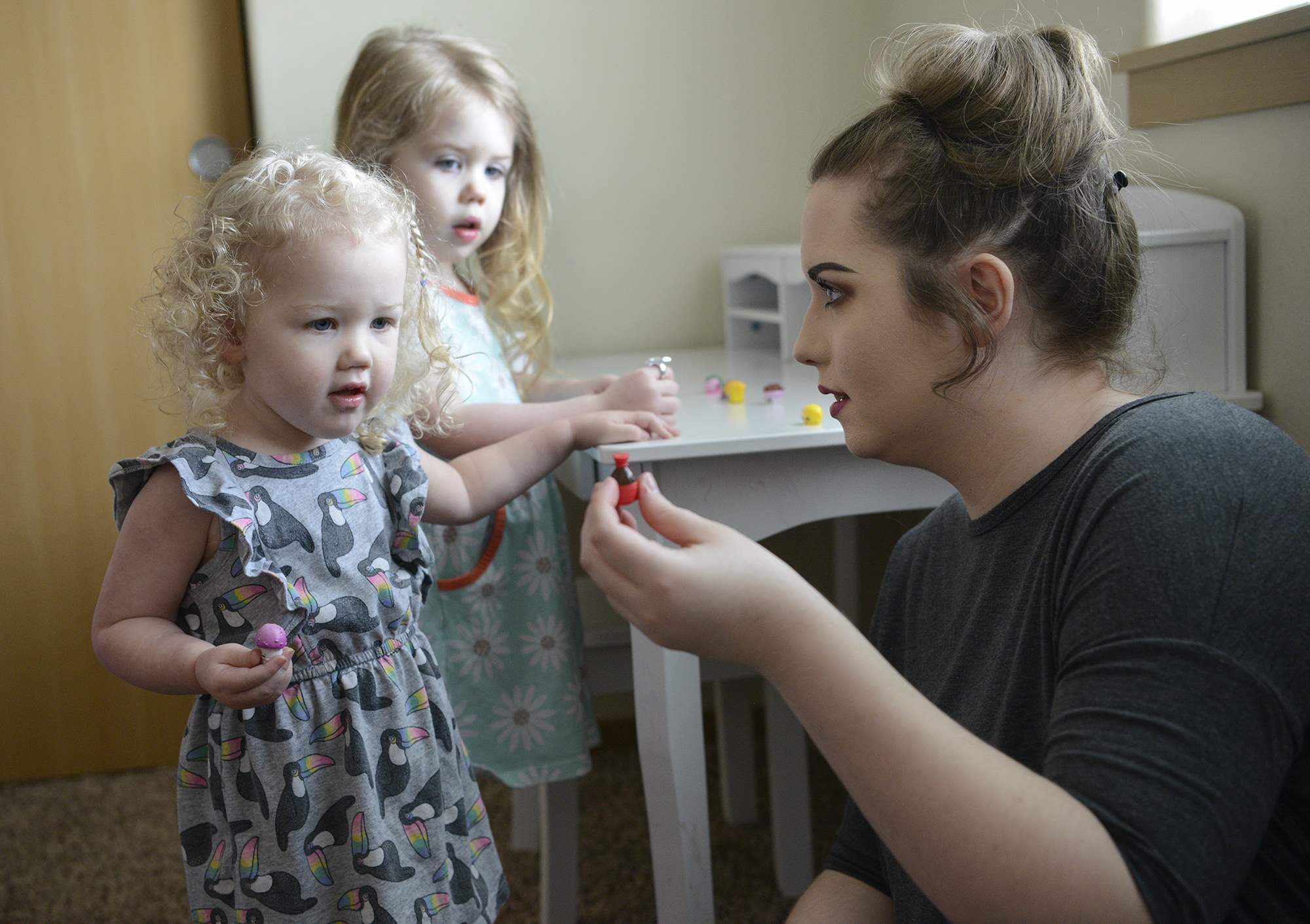
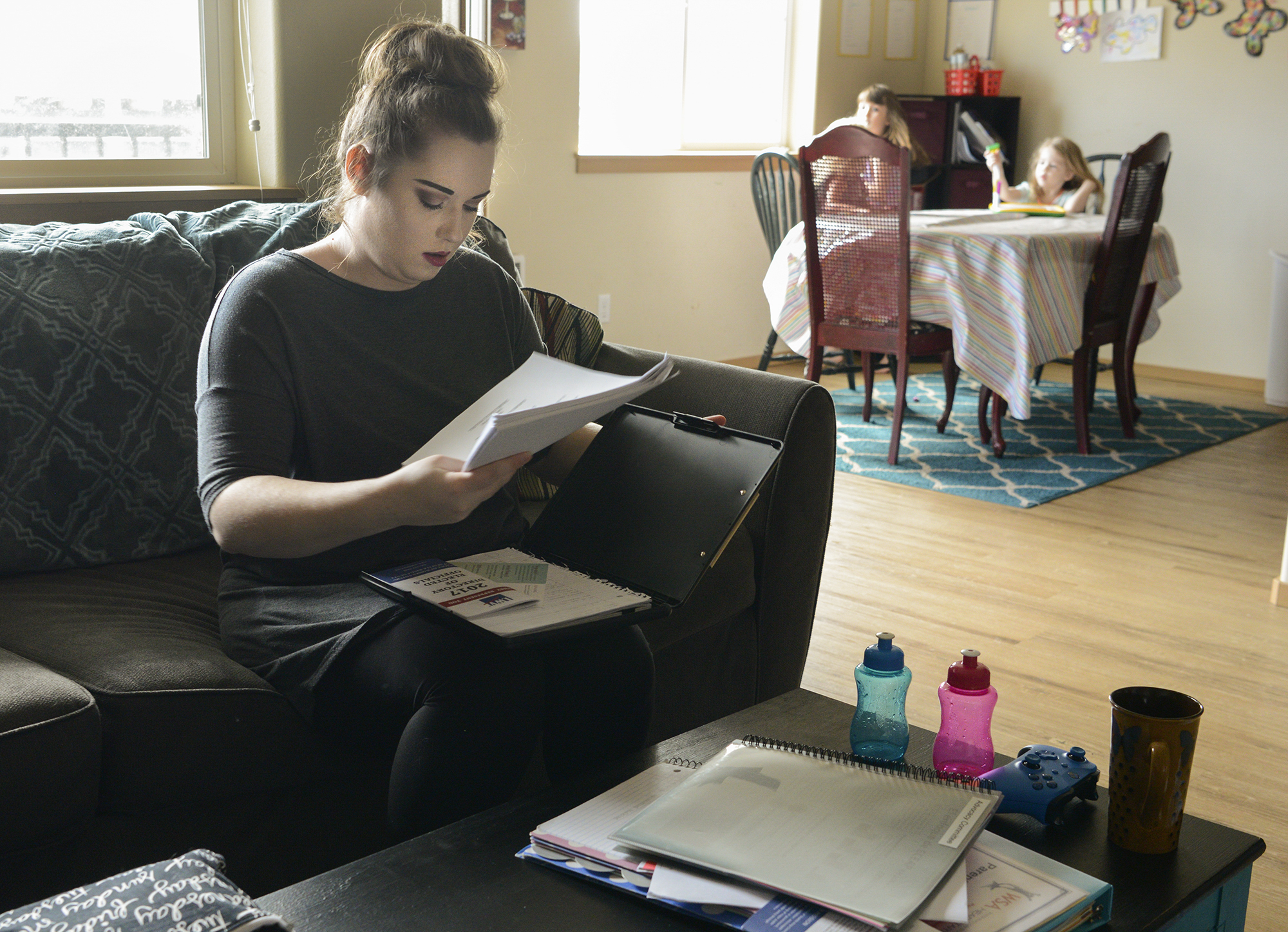

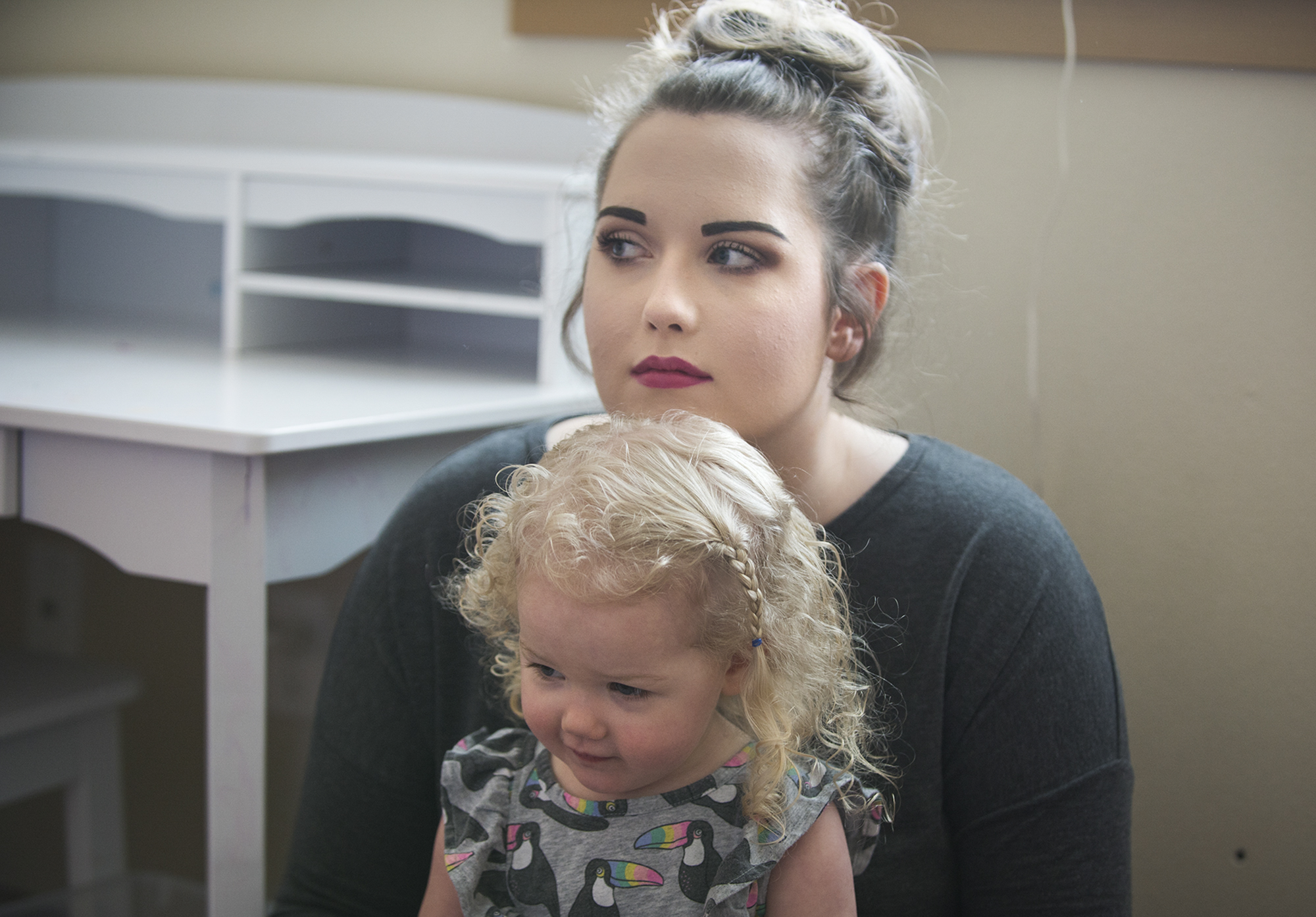
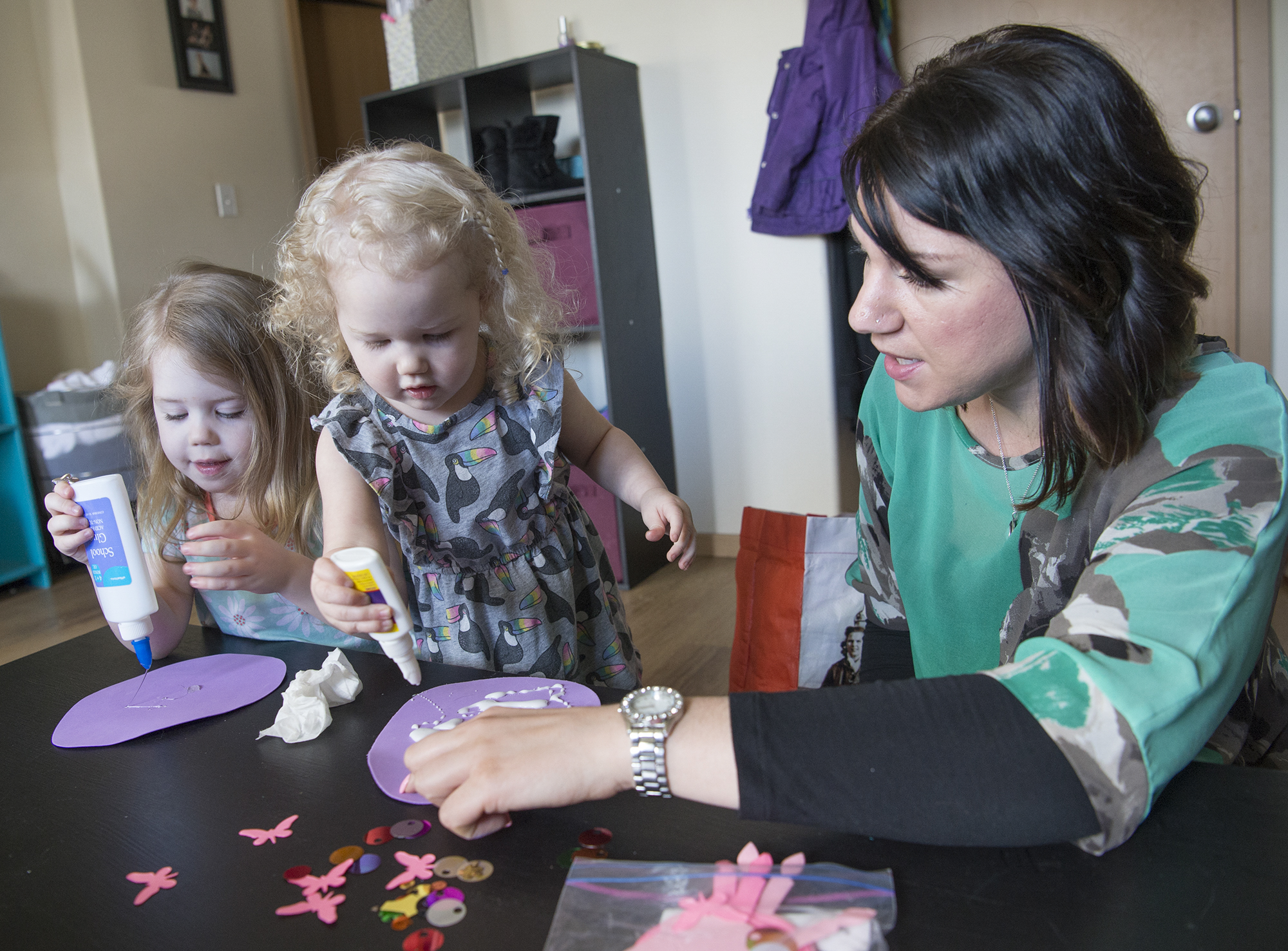
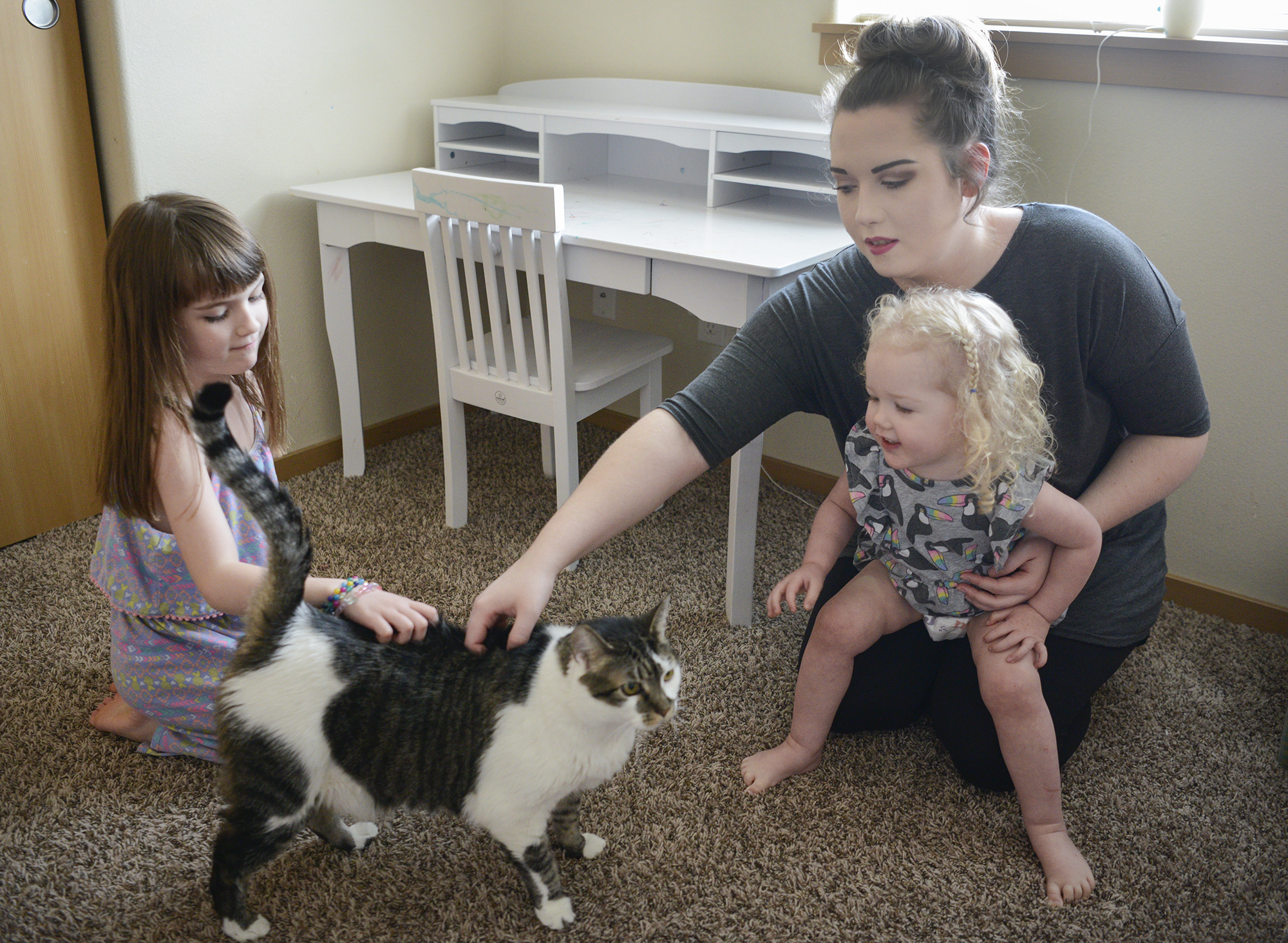
Weeks described being an overwhelmed stay-at-home mother, once shutting herself in the bathroom during one of her oldest daughter’s meltdowns.
“I had to go in the bathroom and cry because I felt like I was failing my baby girl,” Weeks said. “That was the moment I realized I had to research and find a way to help her.”
During a visit to a WorkSource office, Weeks noticed an EOCF flier. Weeks ripped a tab from the sheet and called to enroll her oldest daughter in an ECEAP preschool, and Adaline in Early Head Start.
By working one-on-one with her ECEAP family advocate, Weeks learned how to work with Lellianna through her temper tantrums. Adaline’s communication skills blossomed. Lellianna is now a kindergarten student at Glenwood Heights Primary School, while Adaline is enrolled in ECEAP. An Early Head Start home visitor comes to the house weekly to work with Isabelle.
While playing with her daughters one recent afternoon, some of those parenting skills Weeks has gained became apparent. She gives her daughters choices on what to play with, offers suggestions on how they can share, and asks Lellianna to think through her choices.
“Would that be fair or honest?” she asked a pouting Lellianna, who wanted to continue using glue after she had asked the younger children to put it away.
No, came the eventual decision.
While receiving the emotional support she needed has helped Lellianna succeed in school, Weeks said becoming connected with EOCF was life-changing for her as well. She’s since advocated for improved early childhood access to legislators in Olympia, helped organize marketing efforts to promote the preschool programs that helped her children, and supported families in their own goals for their children.
Weeks hopes when she finishes her degree online in human resources from Ashford University to begin working at EOCF.
“It’s an amazing thing, going from pulling a number from a paper to it being our second home,” she said.